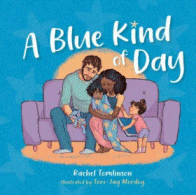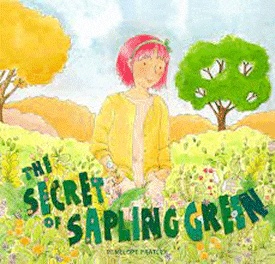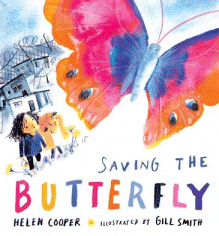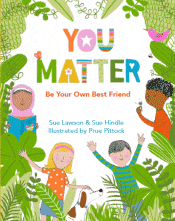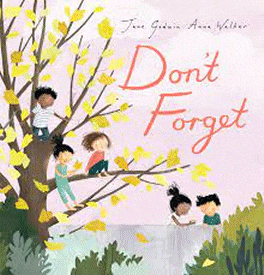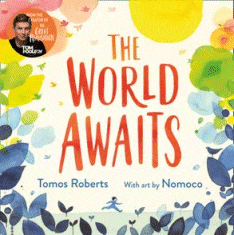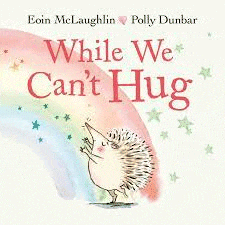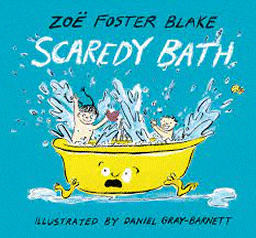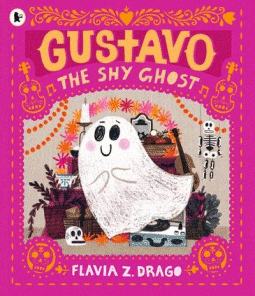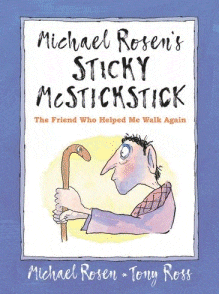
Michael Rosen’s Sticky McStickstick: The Friend Who Helped Me Walk Again
Michael Rosen’s Sticky McStickstick: The Friend Who Helped Me Walk Again
Michael Rosen
Tony Ross
Walker, 2022
40pp., hbk., RRP $A27.99
9781529502404
Imagine being so sick that you can’t get out of bed, not even to go to the loo. So sick that it takes three people to even sit you up and that in itself is so exhausting that you beg to be allowed to lie down again, and, when you do, you lie there almost paralysed from the effort it took. That as much as you want to just lie there, those around you persist because they have faith that you can do this, and s-l-o-w-l-y. s-l-o-w-l-y you begin to share that belief. And even though it takes every bit of strength you have, and it’s painful and oh-so tiring, your determination overwhelms the desire to just sleep forever, and you begin to move forward. Literally just baby steps to begin with, but each one a little longer than the last until at last, you are really kicking goals. Your best friend is a walking frame, then a wheelchair, then a walking stick and your greatest achievement could be going to the toilet all by yourself with no helpers – when to be able to do something as natural and necessary as a wee without spectators becomes a red-letter day!
This is the story of children’s author Michael Rosen, he who gave our children We’re Going on a Bear Hunt amongst so many others, superbly illustrated by Tony Ross who has taken the edge off the seriousness of Rosen’s situation with his perfect artwork, as Rosen recovered from COVID 19 in 2020.
But it is my story too for in 2021 I found myself following exactly in Rosen’s footsteps (but for a different reason, struck down by the rarest of rare allergies) and sadly, it is also the story of so many of our children who, for many reasons, find themselves on that uphill climb where each metre gained is worthy of celebration.
However, while I understand Rosen’s journey so well (I’m still kicking goals twelve months on as I recover, so although I can now toilet and shower myself, I still have challenges to face like having the strength to squeeze the nozzle of the petrol pump to fill my car), and I acknowledge that what we have been through has been traumatic both physically and mentally (because staring down death has that effect), what shone through this story for me was his hope, his perseverance, his determination, his courage, his resilience and his faith that he would triumph, once he was able to accept that the doctors, nurses, physios, occupational therapists were all on his side and that family and friends were cheering for him, literally every step of the way. That for all we like to think we are self-sufficient, perhaps an island, it is the love, connections and support of and with others that infuse us with the wherewithal to keep pushing.
And for that alone, we should be sharing this story with our students, many of whom are facing seemingly insurmountable battles and helping them understand that it can be an hour at a time, a day at a time, a step at a time and while that step might be a backward one, we believe that they will go forward again. Yes, we each have an inner strength, stronger than we ever realise until we have to draw on it, but it is that encouragement and belief of those we love that is the driving force to keep trying. It may not be a physical illness such as Rosen and I had, but for the child it is just as serious and devastating, and thus the need for our support is as vital as Sticky McStickstick in their recovery. And to go a little further, once recovery eventually occurs, to realise that there will be unexpected long-term impacts to deal with so that while Sticky Mcstickstick might spend most of his days in a basket just in case, he still needs to be there both as a support for when we fall and as a reminder of all that we did and learned as we recovered.
And for me, as well as my own Sticky McStickstick I now have this book – a story of a journey undertaken and conquered by so many more than me and Rosen.
